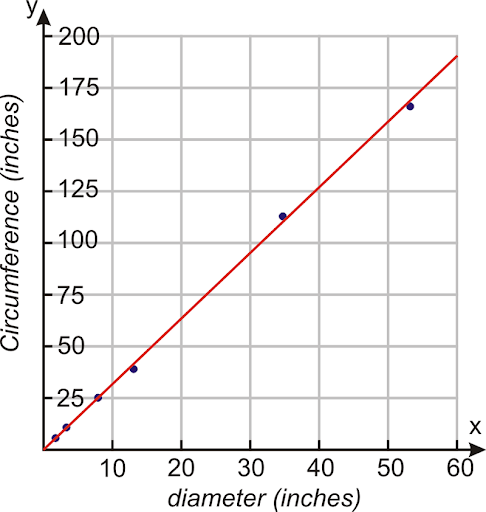Chapter 4: Linear Functions
Print Version Only Chapter 4 Linear Functions - Informal Math Modeling

In this chapter...
- 4.1 Introduction to Linear Functions
- 4.2 Linear Models
- 4.3 Linear Systems
Elementary school activities may provide opportunities for children to observe linear functions early on. For example, students could plant seeds and record daily heights in a table. If the plant grows the same amount each day, this is linear and if it grows by different amounts each day, then it is non-linear. They are subsequently introduced to input/output tables with linear relationships.
Later in elementary school students explore the properties of such relationships, which we will study in this section. Learning about rate of change prepares them for the concept of slope, which is essential to identifying linear functions.
According to the National Council of Teachers of Mathematics (NCTM) Principles and Standards for School Mathematics…
In prekindergarten through grade 2 all students should…
- describe quantitative change, such as a student's growing two inches in one year.
In grades 3–5 all students should…
- investigation how a change in one variable relates to a change in a second variable
- identify and describe situations with constant or varying rates of change and compare
In grades 6–8 all students should…
- identify functions as linear or nonlinear and contrast their properties from tables, graphs, or equations
- use graphs to analyze the nature of changes in quantities in linear relationships.
In the Massachusetts Mathematics Curriculum Framework…
Grade 8
8.F.A. Define, evaluate, and compare functions.
- Interpret the equation [latex]y = mx + b[/latex] as defining a linear function whose graph is a straight line; give examples of functions that are not linear.
8.F.B. Use functions to model relationships between quantities.
- Construct a function to model a linear relationship between two quantities…… Interpret the rate of change and initial value of a linear function in terms of the situation it models, and in terms of its graph or a table of values.
The slope of a function from one input value to another input value is the change in corresponding output values divided by the change in the given input values (often known as the change in y divided by the change in x or "rise over run"). Graphically, the slope gives the steepness of the line through the two corresponding points.
a letter that represents a quantity that may vary
a statement (with an equal sign) asserting that two expressions have the same numerical value
A function whose graph is a straight line (constant slope). Such functions may be written in the form y = mx+b where m is the slope and (0,b) is the y-intercept.

